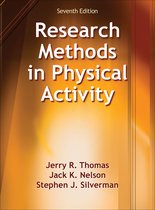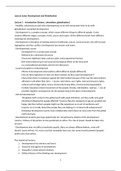a. ELECTROSTATICS: ELECTRIC CHARGES AND FIELD
Electrostatics is the study of charges at rest.
¥ Charge (q)
- Charge is an intrinsic property of matter due to which it experiences Electrostatic forces of attraction and repulsion.
- There are two types of charges; positive (e.g. proton) and negative (e.g. electron)
- Charge on a single electron is T
e = 1.6 × 10-19C | SI Unit- Coulomb(C) ① ← →
①
Properties of charge
① → ←
f
1. Attraction and repulsion: Like charges repel each other | Unlike charges attract each other
2. Additive nature of charge: Charge is additive in nature i.e. total charge on a body is the algebraic sum of all charges
present on the body.
mas
Ques: '
Total charge on body = +10C +5C -3C-2C
= 10C Ans.
3. Quantisation of charge
- Charge on a body is the integral multiple of charge on a single Electron.
i.e. IQ = ne
Where e is the charge on a single electron and n
Ques: Calculate the no. of electrons in 1C charge
Ans: q= ne; 1= n × 1.6×10-19;;n= 6.25 × 1018 electrons.
4. Invariability of charge
- Charge is invariable in nature i.e. the charge on a body does not depend on its state of rest or motion.
Principle of conservation of charge
In an isolated s stem charge can neither be created nor destro ed
-
Note: If a body has excess electrons, it has a negative charge.
If a body has excess protons, it has a positive charge.
Methods of charging bodies
1. Charging bodies by rubbing/friction
When two bodies are rubbed together, the friction between the bodies causes transfer of electrons from one body
to another and as a result both bodies become charged. The body which loses electrons becomes positively charged
and the body which gains electrons becomes negatively charged.
Eg - rubbing glass rod with silk, rubbing plastic rod with fur
- By convention, charge on glass rod and fur is positive and charge on silk cloth and plastic rod is negative.
, a. ELECTROSTATICS: ELECTRIC CHARGES AND FIELD
Electrostatics is the study of charges at rest.
¥ Charge (q)
- Charge is an intrinsic property of matter due to which it experiences Electrostatic forces of attraction and repulsion.
- There are two types of charges; positive (e.g. proton) and negative (e.g. electron)
- Charge on a single electron is T
e = 1.6 × 10-19C | SI Unit- Coulomb(C) ① ← →
①
Properties of charge
① → ←
f
1. Attraction and repulsion: Like charges repel each other | Unlike charges attract each other
2. Additive nature of charge: Charge is additive in nature i.e. total charge on a body is the algebraic sum of all charges
present on the body.
mas
Ques: '
Total charge on body = +10C +5C -3C-2C
= 10C Ans.
3. Quantisation of charge
- Charge on a body is the integral multiple of charge on a single Electron.
i.e. IQ = ne
Where e is the charge on a single electron and n
Ques: Calculate the no. of electrons in 1C charge
Ans: q= ne; 1= n × 1.6×10-19;;n= 6.25 × 1018 electrons.
4. Invariability of charge
- Charge is invariable in nature i.e. the charge on a body does not depend on its state of rest or motion.
Principle of conservation of charge
In an isolated s stem charge can neither be created nor destro ed
-
Note: If a body has excess electrons, it has a negative charge.
If a body has excess protons, it has a positive charge.
Methods of charging bodies
1. Charging bodies by rubbing/friction
When two bodies are rubbed together, the friction between the bodies causes transfer of electrons from one body
to another and as a result both bodies become charged. The body which loses electrons becomes positively charged
and the body which gains electrons becomes negatively charged.
Eg - rubbing glass rod with silk, rubbing plastic rod with fur
- By convention, charge on glass rod and fur is positive and charge on silk cloth and plastic rod is negative.
, 2. Charging by touch
When a charged body is made to touch an uncharged body, some of the charge from the charged body is
transferred to the other body. This is called charging by touch.
i
3. Charging by induction
Let us understand charging by induction through an example.
- Take two metallic spheres A and B (mounted on insulating stands) and bring them together.
- Now, bring a positively charged rod near the left end of sphere A (not touching).
- The positive charge of the rod attracts the electrons of A as a result there is an excessive negative charge on left side
of A. At the same time, there is an accumulation of excessive positive charge on right side of sphere B due to
repulsive forces.
- So, we see that at the end of this process, both spheres become charged. This process of charging is called charging
by induction.
Note: 1. Charges on both spheres will be equal and opposite.
2. Not all the electrons in the sphere accumulate on one side because as electrons keep getting accumulated, the
incoming electrons feel a strong force of repulsion from the already accumulated electrons. Over time equilibrium is
set up under the force of attraction of the rod and force of repulsion of the electrons.
¥ Gold leaf Electroscope
- Used to detect charge on a body.
Working: when a charged body is brought near or touched with
the metal knob, charge travels to the leaves through the rod.
Since both the leaves have the same charge they diverge(repel)
The degree of divergence is an indicator of amount of charge.
Electrostatics is the study of charges at rest.
¥ Charge (q)
- Charge is an intrinsic property of matter due to which it experiences Electrostatic forces of attraction and repulsion.
- There are two types of charges; positive (e.g. proton) and negative (e.g. electron)
- Charge on a single electron is T
e = 1.6 × 10-19C | SI Unit- Coulomb(C) ① ← →
①
Properties of charge
① → ←
f
1. Attraction and repulsion: Like charges repel each other | Unlike charges attract each other
2. Additive nature of charge: Charge is additive in nature i.e. total charge on a body is the algebraic sum of all charges
present on the body.
mas
Ques: '
Total charge on body = +10C +5C -3C-2C
= 10C Ans.
3. Quantisation of charge
- Charge on a body is the integral multiple of charge on a single Electron.
i.e. IQ = ne
Where e is the charge on a single electron and n
Ques: Calculate the no. of electrons in 1C charge
Ans: q= ne; 1= n × 1.6×10-19;;n= 6.25 × 1018 electrons.
4. Invariability of charge
- Charge is invariable in nature i.e. the charge on a body does not depend on its state of rest or motion.
Principle of conservation of charge
In an isolated s stem charge can neither be created nor destro ed
-
Note: If a body has excess electrons, it has a negative charge.
If a body has excess protons, it has a positive charge.
Methods of charging bodies
1. Charging bodies by rubbing/friction
When two bodies are rubbed together, the friction between the bodies causes transfer of electrons from one body
to another and as a result both bodies become charged. The body which loses electrons becomes positively charged
and the body which gains electrons becomes negatively charged.
Eg - rubbing glass rod with silk, rubbing plastic rod with fur
- By convention, charge on glass rod and fur is positive and charge on silk cloth and plastic rod is negative.
, a. ELECTROSTATICS: ELECTRIC CHARGES AND FIELD
Electrostatics is the study of charges at rest.
¥ Charge (q)
- Charge is an intrinsic property of matter due to which it experiences Electrostatic forces of attraction and repulsion.
- There are two types of charges; positive (e.g. proton) and negative (e.g. electron)
- Charge on a single electron is T
e = 1.6 × 10-19C | SI Unit- Coulomb(C) ① ← →
①
Properties of charge
① → ←
f
1. Attraction and repulsion: Like charges repel each other | Unlike charges attract each other
2. Additive nature of charge: Charge is additive in nature i.e. total charge on a body is the algebraic sum of all charges
present on the body.
mas
Ques: '
Total charge on body = +10C +5C -3C-2C
= 10C Ans.
3. Quantisation of charge
- Charge on a body is the integral multiple of charge on a single Electron.
i.e. IQ = ne
Where e is the charge on a single electron and n
Ques: Calculate the no. of electrons in 1C charge
Ans: q= ne; 1= n × 1.6×10-19;;n= 6.25 × 1018 electrons.
4. Invariability of charge
- Charge is invariable in nature i.e. the charge on a body does not depend on its state of rest or motion.
Principle of conservation of charge
In an isolated s stem charge can neither be created nor destro ed
-
Note: If a body has excess electrons, it has a negative charge.
If a body has excess protons, it has a positive charge.
Methods of charging bodies
1. Charging bodies by rubbing/friction
When two bodies are rubbed together, the friction between the bodies causes transfer of electrons from one body
to another and as a result both bodies become charged. The body which loses electrons becomes positively charged
and the body which gains electrons becomes negatively charged.
Eg - rubbing glass rod with silk, rubbing plastic rod with fur
- By convention, charge on glass rod and fur is positive and charge on silk cloth and plastic rod is negative.
, 2. Charging by touch
When a charged body is made to touch an uncharged body, some of the charge from the charged body is
transferred to the other body. This is called charging by touch.
i
3. Charging by induction
Let us understand charging by induction through an example.
- Take two metallic spheres A and B (mounted on insulating stands) and bring them together.
- Now, bring a positively charged rod near the left end of sphere A (not touching).
- The positive charge of the rod attracts the electrons of A as a result there is an excessive negative charge on left side
of A. At the same time, there is an accumulation of excessive positive charge on right side of sphere B due to
repulsive forces.
- So, we see that at the end of this process, both spheres become charged. This process of charging is called charging
by induction.
Note: 1. Charges on both spheres will be equal and opposite.
2. Not all the electrons in the sphere accumulate on one side because as electrons keep getting accumulated, the
incoming electrons feel a strong force of repulsion from the already accumulated electrons. Over time equilibrium is
set up under the force of attraction of the rod and force of repulsion of the electrons.
¥ Gold leaf Electroscope
- Used to detect charge on a body.
Working: when a charged body is brought near or touched with
the metal knob, charge travels to the leaves through the rod.
Since both the leaves have the same charge they diverge(repel)
The degree of divergence is an indicator of amount of charge.



